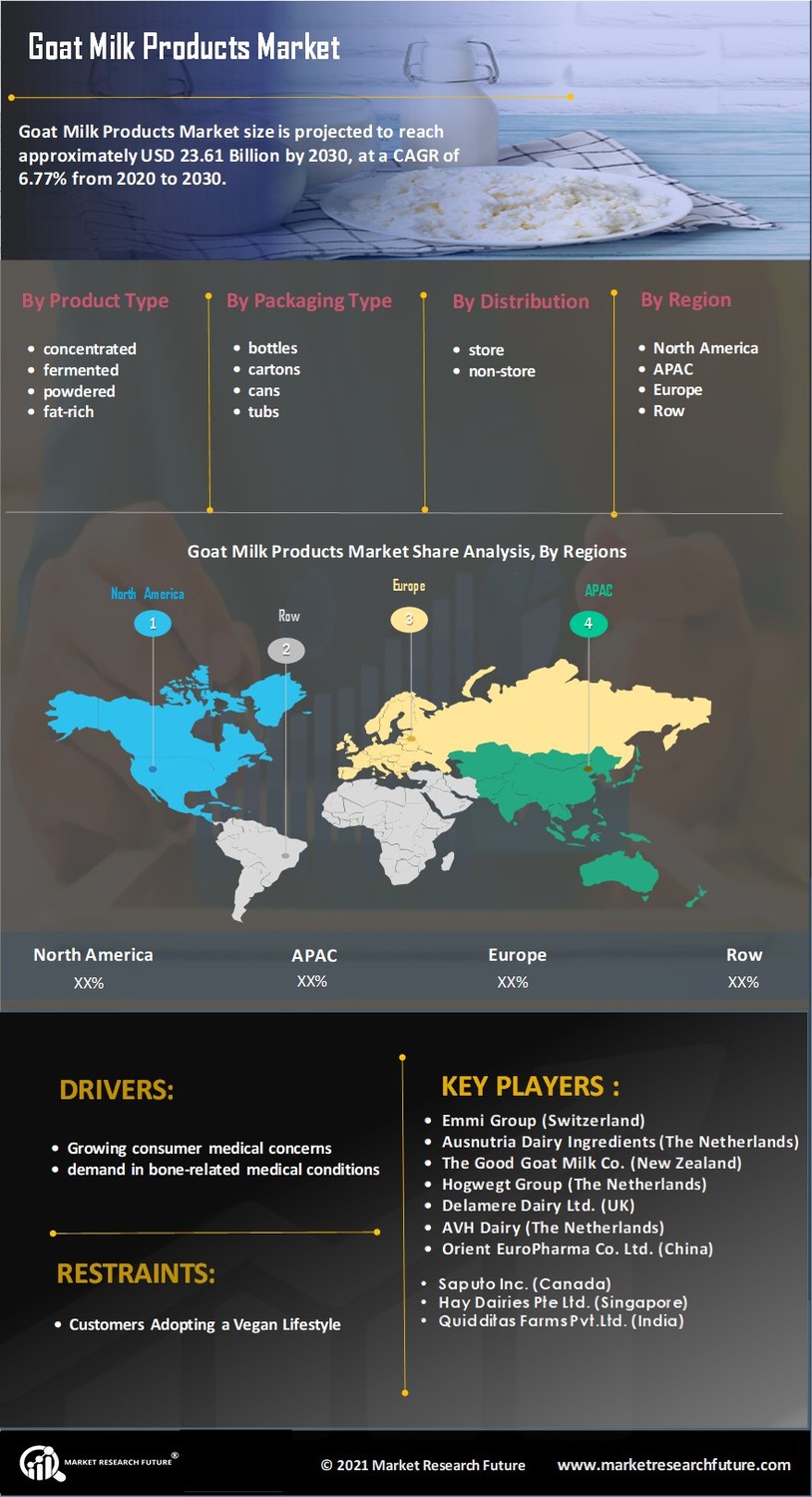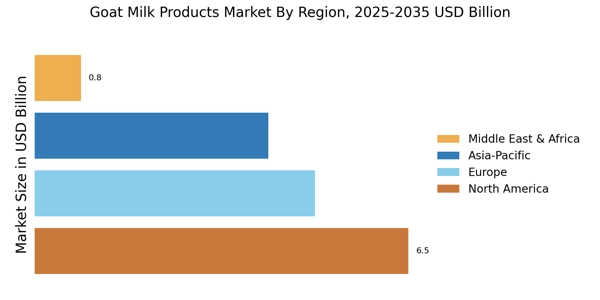Nutritional Superiority of Goat Milk
The Goat Milk Products Market benefits from the nutritional advantages of goat milk, which is often perceived as a healthier alternative to cow's milk. Goat milk is rich in essential nutrients, including calcium, phosphorus, and vitamins A and D. It is also easier to digest due to its smaller fat globules and lower lactose content, making it suitable for individuals with lactose intolerance. This nutritional profile has led to an increase in consumer awareness and preference for goat milk products, contributing to a projected growth rate of approximately 7% annually in the sector. As health-conscious consumers seek alternatives to traditional dairy, the Goat Milk Products Market is likely to expand significantly.
Rising Demand for Dairy Alternatives
The Goat Milk Products Market is experiencing a surge in demand for dairy alternatives, driven by changing dietary preferences and an increase in lactose intolerance among consumers. As more individuals adopt plant-based diets or seek alternatives to conventional dairy, goat milk emerges as a viable option. The market for dairy alternatives is projected to reach USD 30 billion by 2026, with goat milk products capturing a notable share due to their unique flavor and health benefits. This trend indicates a shift in consumer behavior, where goat milk products are increasingly recognized as a nutritious substitute, thereby propelling the Goat Milk Products Market forward.
Culinary Versatility and Gourmet Appeal
The Goat Milk Products Market is bolstered by the culinary versatility of goat milk, which is increasingly embraced by chefs and home cooks alike. Its distinct flavor profile enhances a variety of dishes, from savory to sweet, making it a popular choice in gourmet cooking. The rise of artisanal food products has further fueled interest in goat milk, with specialty cheeses and yogurts gaining traction among consumers. This trend is reflected in the growing number of gourmet food establishments incorporating goat milk products into their menus. As culinary innovation continues to thrive, the Goat Milk Products Market is likely to see sustained growth, appealing to both health-conscious and gourmet consumers.
Innovative Product Development and Branding
The Goat Milk Products Market is witnessing a wave of innovative product development, with brands introducing a diverse range of goat milk products, including cheese, yogurt, and infant formula. This innovation is driven by consumer demand for unique flavors and health benefits, prompting companies to invest in research and development. Additionally, effective branding strategies that highlight the nutritional and ethical advantages of goat milk are gaining traction. As a result, the Goat Milk Products Market is likely to expand, with new entrants and established brands alike capitalizing on the growing interest in goat milk products, thereby enhancing market competition and consumer choice.
Sustainability and Ethical Consumption Trends
The Goat Milk Products Market is positively influenced by the increasing consumer focus on sustainability and ethical sourcing. Goat farming is often considered more environmentally friendly compared to traditional dairy farming, as goats require less land and water. This aspect resonates with environmentally conscious consumers who prioritize sustainable practices in their purchasing decisions. As the demand for ethically sourced products rises, goat milk products are positioned favorably within the market. The Goat Milk Products Market may experience growth as consumers seek out brands that align with their values, potentially leading to a more significant market share in the dairy alternative sector.


















Leave a Comment